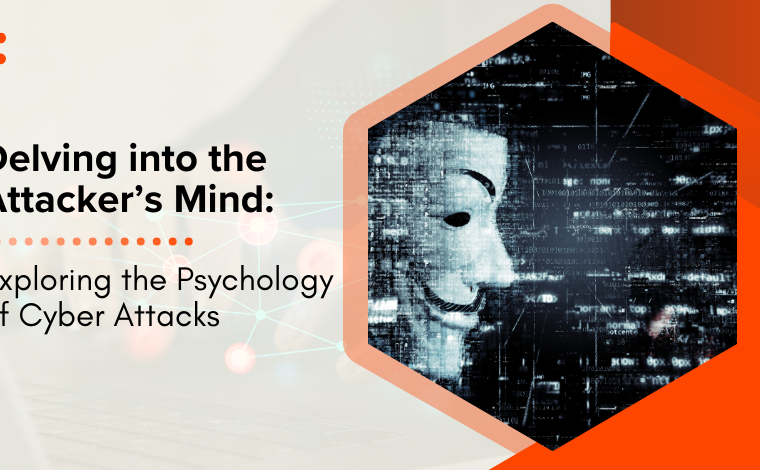The Importance of Cybersecurity Awareness Training for Employees

Stay Informed With Our Weekly Newsletter
Receive crucial updates on the ever-evolving landscape of technology and innovation.
In today’s digital landscape, where cyber threats are becoming more sophisticated and prevalent, companies must prioritize cybersecurity awareness training for their employees.
Understanding the basics of cybersecurity is crucial in safeguarding sensitive data and protecting against potential cyber attacks.
Organizations can effectively mitigate risks and maintain a secure digital environment by equipping employees with the necessary knowledge and skills.
Understanding the basics of cybersecurity

Cybersecurity refers to the practice of protecting electronic systems, networks, and data from unauthorized access or damage.
It involves implementing preventive measures, such as firewalls and encryption, to defend against cyber threats.
Additionally, cybersecurity includes strategies for identifying, monitoring and responding to incidents to minimize the impact on an organization.
What does cybersecurity do?
Cybersecurity protects electronic systems, networks, and data from unauthorized access or damage.
It includes a range of measures that organizations can implement to safeguard their digital assets.
One of the primary goals of cybersecurity is to prevent unauthorized individuals or entities from gaining access to sensitive information.
This can include personal data, financial records, intellectual property, and other valuable assets.
By implementing robust security measures, organizations can reduce the risk of data breaches and protect the privacy and confidentiality of their stakeholders.
Key terms and concepts in cybersecurity
When it comes to cybersecurity, there are several key terms and concepts that employees need to be familiar with.
This knowledge provides a foundation for understanding the importance of cybersecurity awareness training.
One such concept is “threats,” which are potential events or actions that can cause harm to an organization’s information systems.
These threats may come from external sources, such as hackers, or internal sources, such as disgruntled employees.
Understanding the different types of threats is essential for organizations to develop effective defense mechanisms.
Common cyber threats include malware, phishing attacks, ransomware, and social engineering.
Organizations can better protect themselves from attacks by staying informed about the latest threats.
Another crucial term is “vulnerabilities,” which refers to weaknesses in a system’s security that threats can exploit.
Identifying and addressing vulnerabilities is essential to maintaining a robust cybersecurity posture.
Vulnerabilities can arise from various factors, including outdated software, misconfigured systems, weak passwords, and human error.
Furthermore, “risks” are the likelihood and potential impact of a particular threat exploiting a vulnerability.
Organizations can prioritize their cybersecurity efforts by assessing risks and allocating resources accordingly.
It is important to note that risks can vary depending on the industry, size, and nature of the organization.
For example, a financial institution may face higher risks due to the sensitive nature of the data it handles, while a small business may have different risk factors to consider.
Organizations can make informed decisions about their cybersecurity strategies and investments by conducting thorough risk assessments.
The role of employees in maintaining cybersecurity
While technological solutions significantly protect against cyber threats, employees are often the weakest link in an organization’s security infrastructure.
The human element in cyber threats is critical because cyber criminals often exploit human vulnerability to access sensitive data or systems.
The human element in cyber threats
Cybercriminals often use social engineering techniques, such as phishing emails or phone scams, to manipulate employees into revealing confidential information or granting unauthorized access.
Employees who must be adequately trained in recognizing and responding to these threats can unknowingly become accomplices in cyber attacks.
Employee responsibilities in cybersecurity
Employees are responsible for actively contributing to their organization’s cybersecurity efforts.
This includes following security protocols, adhering to password policies, and promptly reporting suspicious activities or potential breaches.
The benefits of cybersecurity awareness training

Cybersecurity awareness training offers numerous benefits for both employees and organizations.
Organizations can significantly reduce the likelihood and impact of cyber attacks by educating employees about common cyber risks and best practices.
Mitigating cyber risks through education
One of the primary benefits of cybersecurity awareness training is the ability to mitigate cyber risks through education.
Organizations can create a more secure environment by providing employees with the knowledge and skills to identify and respond to potential threats.
Enhancing company reputation and trust
With the increasing number of high-profile data breaches and cyber-attacks, customers and stakeholders are more concerned about the security practices of the organizations they interact with.
Components of effective cybersecurity awareness training
For cybersecurity awareness training to be effective, organizations must ensure that certain key components are incorporated into the training program.
These components help employees understand the relevance of the training and equip them with the necessary skills to navigate potential cyber threats.
Essential topics to cover in training
When designing a cybersecurity awareness training program, covering essential topics relevant to employees’ roles and responsibilities is vital.
These topics may include:
- Password hygiene and best practices for creating strong passwords.
- Phishing awareness and how to identify suspicious emails or links.
- Safe browsing practices and avoiding malicious websites.
- Mobile device security and protecting personal and company data.
- Safe remote working practices, including using secure and virtual private networks.
The role of continuous learning and updates
Cyber threats are constantly evolving, and new vulnerabilities emerge regularly.
Therefore, employees must continuously learn and stay updated on the latest cybersecurity practices and trends.
Organizations should encourage employees to participate in ongoing training sessions, workshops, and webinars to reinforce their understanding of cybersecurity and inform them about emerging threats.
Implementing cybersecurity awareness training in your organization

Implementing cybersecurity awareness training in your organization requires careful planning and effective communication.
Consider the following steps to introduce a training program that meets the specific needs of your employees and organization:
Steps to introduce a training program
- Assess the current level of cybersecurity awareness within the organization.
- Identify specific training needs based on the roles and responsibilities of employees.
- Develop a comprehensive training curriculum that covers the essential topics mentioned earlier.
- Ensure the training program is engaging, interactive, and relevant to employees.
- Provide regular reminders and reinforcement of key cybersecurity concepts through newsletters, posters, or online resources.
- Monitor and evaluate the effectiveness of the training program through assessments and feedback.
- Continuously refine the training program based on the evolving cyber threat landscape.
Measuring the success of your training program
Measuring the success of your cybersecurity awareness training program is essential to determine its effectiveness.
Consider using the following metrics to evaluate the impact of the training:
- Employee feedback and satisfaction surveys.
- Reduction in the number of security incidents or breaches.
- Improved adherence to security protocols and practices.
- Increase in employees reporting potential security incidents.
- Decrease in the susceptibility to social engineering attacks.
Conclusion
Cybersecurity awareness training is an invaluable investment for organizations looking to protect their digital assets and mitigate the risks associated with cyber threats.
By equipping employees with the skills and knowledge, organizations can create a cybersecurity culture and ensure the safety of sensitive data.
Through effective training, organizations can enhance their cybersecurity posture, safeguard their reputation, and build trust among customers and stakeholders.
Are you ready to launch your career?
The Institute of Data’s Cybersecurity program offers a comprehensive curriculum to equip you with the practical skills necessary to navigate this ever-changing field in tech.
We produce industry-ready professionals ready to tackle cyber threats and contribute to organizational security, a valuable asset in our increasingly digital world.
Want to dive in and learn more about our program? Contact our local team for a free career consultation today.




